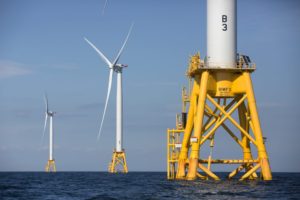GWO accreditations fall into the two basic standards created by the industry to ensure consistency in safety systems and processes. Each is a vital qualification for technicians looking to work in the wind energy industry.
This week we take a look at the two basic standards and the modules that make up the the GWO accreditations. All of STL USA’s GWO training courses cover the modules that make up the two standards.
About GWO
GWO – Global Wind Organisation was founded by its constituent members including wind turbine manufacturers, owners and training providers. The first safety standard was published in 2012 and refreshed in 2017 in response to industry demand for a recognisable standard for the sector. This was followed by the technical standard with both GWO accreditations becoming the industry norm for technicians in the industry.
Basic Safety Training modules
Each module in the Basic Safety Training accreditation covers essential aspects of safety for technicians in the wind energy sector. The modules are designed to equip the technician with a strong safety baseline and are essential to work on turbines operated by GWO members. Basic Safety Training was introduced in 2012 as a direct result of the wind energy sector coming together to agree uniform safety standards.
Modules included in Basic Safety Training include those below as well as refreshers for each which are required to be taken annually.
- First Aid
- Working at Height
- Manual Handling
- Fire Awareness
- Sea Survival
Basic Technical Training modules
The Basic Technical Training accreditation is designed to equip technicians with with a strong practical knowledge of the key technical aspects of wind turbines. Introduced in 2017, the Basic Technical Training Standard consists of three core modules and an additional installation module which can be taken after certification in the mechanical module. From 31st March 2018 all new technicians working for GWO member companies and their suppliers are expected to complete Basic Technical Training. Modules include:
- Mechanical
- Electrical
- Hydraulic
- Installation
These two GWO accreditations form the backbone of technicians required knowledge for performing their jobs in a safe best practice environment. STL USA have over 15 years experience training technicians in the USA, UK and Europe in all of the modules. Training takes place at very locations around the world with two key centers in the USA; Texas and Iowa.
For more information and to book your GWO training course click the button below.
[dt_default_button link=”https://safetytechnologyusa.com/#!/consultation” button_alignment=”left” animation=”fadeIn” size=”big” default_btn_bg_color=”” bg_hover_color=”” text_color=”” text_hover_color=”” icon=”fa fa-chevron-circle-right” icon_align=”left”]Enquire Now[/dt_default_button]





 Great news to see that former Iowa State Senator Jeff Danielson has joined the AWEA. His remit will to lead policy advocacy efforts across Midwestern and Plains states. As a former navy serviceman, firefighter and State Senator Jeff served his community with distinction and we can’t wait to see the results of his efforts for wind energy. Mr Danielson said “I’ll be working for a wonderful organization dedicated to growing a homegrown American energy source that strengthens the economy, improves the health of communities and makes us safer as a nation.” We have a special connection to Iowa as it’s home to one of our training facilities, administered by the Iowa Lakes Community College.
Great news to see that former Iowa State Senator Jeff Danielson has joined the AWEA. His remit will to lead policy advocacy efforts across Midwestern and Plains states. As a former navy serviceman, firefighter and State Senator Jeff served his community with distinction and we can’t wait to see the results of his efforts for wind energy. Mr Danielson said “I’ll be working for a wonderful organization dedicated to growing a homegrown American energy source that strengthens the economy, improves the health of communities and makes us safer as a nation.” We have a special connection to Iowa as it’s home to one of our training facilities, administered by the Iowa Lakes Community College.